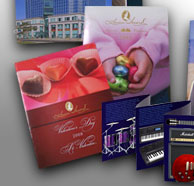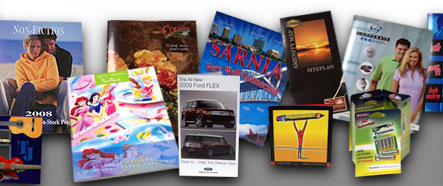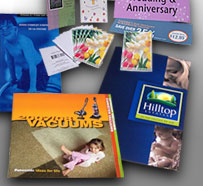High-Definition Printing
With HighLine XM Screening & Satin Screening.
If you have ever seen the new high definition televisions sitting beside the regular CRT displays you can immediatly see the difference. Not only are the images cleaner & sharper, they are also more colorful and vibrant. We get these same improvements with our High Definition Printing.
Why settle for regular printing when you can amaze your customers with High Definition Printing? High Definition Printing will separate you from the competition giving you the edge you need to win & keep those jobs. No one else offers High Definition Printing at trade prices.
What is High Definition Printing?
High Definition Printing is essentially printing with very high resolution resulting in lifelike images with detail & clarity that you just cannot achieve with traditional printing. This concept is similar to that of High Definition Television. In a world that is seeing quality advancements in almost everything that we see (such as TV's, cameras, printers, etc.), it only makes sence that print quality should be improved as well. The technology to improve print quality has existed for over 10 years now & with new technology, it only gets easier & easier. Advance printing has been printing with High Definition Screening since 1999.
 Since we are talking about visual representation, the best way to explain this is to show the difference. The babies face (right) was printed with different screening. The images were then scanned at 4800 dpi & enlarged to show the dot structure. Below are the result with the different screenings. As you can see, the 150 line (far right below) image shows large dots & the image is not recognisable. With all the other screens, you can clearly see babies eye as well as other fine detail.
Since we are talking about visual representation, the best way to explain this is to show the difference. The babies face (right) was printed with different screening. The images were then scanned at 4800 dpi & enlarged to show the dot structure. Below are the result with the different screenings. As you can see, the 150 line (far right below) image shows large dots & the image is not recognisable. With all the other screens, you can clearly see babies eye as well as other fine detail.
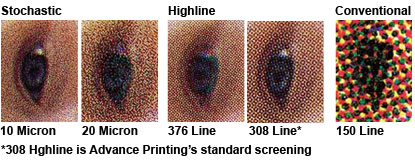
High Definition Screening in the market
Advance Printing was the first printer to switch entirely to stochastic back in 99. There were other printers using it at the time however, they ran less than 5% of their work with this screening. Since then, there are now over 100 Canadian printers offering linescreens above 200 line & many more who now print 175 or 200 line.
HighLine XM Screening
Advance Printing has upgraded to HighLine XM screening from Esko. We will still image FM screening with either Satin screening (from Heidelberg) or Monet (from Esko). HighLine screening is a hybrid sceening that gives an image similar to that of stochastic, but without the technical difficulties. The main difference you will see with the new screening is the smoothness of the fleshtones and flat tints. With stochastic screening these areas appeared slightly grainy however that has pretty much been eliminated with HighLine Screening. HighLine is also much more stable on the plate, giving more stable colour reproduction from beginning to end of the run.
Why switch to HighLine?
Since we are open to improvement, we are not emotionally stuck on any product. Printing with stochastic does create some challenges & it does have it's drawbacks. 10um printing is the biggest challenge due to the size of the dot. Most of the printing plates on the market are not capable of holding the small dots. Highlight dots are the hardest to hold & the dot tends to slowly disappear from the plate. The plates also have a difficult time consistantly imaging the dots, resulting in dot gains that vary as much as 15%. There is also an issue with some plates that produce banding in flat tints. 20um printing is much easier to control since the dot is twice the size. It does not totally resolve the problems but it is far more reliable than 10um. HighLine is a hybrid screening that brings together the best of both worlds with the benefits of stochastic & the stability of a larger dot.
Compare the print results yourself
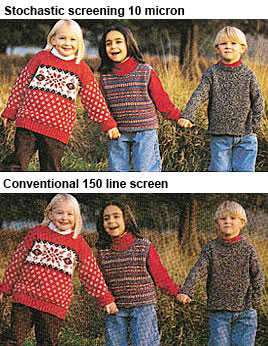
Print Quality
Printing at the standard 150 line screen results in an image with rosettes, loss of detail and moire. Many copiers and printers have improved in quality and are looking as good as traditional 150 line screen using screening technology similar to stochastic. The technology exists to improve print quality so why not use it.
Why not use a higher linescreen such as 175 or 200 line?
While 175 line looks a little better it is only a small step, 200 line would be preferable over 175. Both of these resolutions should be imaged at a higher resolution, 3360 DPI (although you could get away with imaging 175 line at 2540 DPI) which result in increased ripping time and substantially increased imaging time which means extra costs. High Definition images at 2540 DPI, ripping time is the same as 150 line and any extra imaging time is minimal.
File size
The vast majority of files are produced at 300 DPI and these files would not be suitable for the higher line screens. Files for 175 line should be scanned at 350 DPI and 200 at 400 DPI which result in file sizes that are 35-55% larger. This would increase the time it takes at every production stage, increase the storage space needed for these files and increase network transfer times. This would result in extra costs for everyone. High Definition screening utilizes 300 DPI images and lower resolutions are possible without degrading print quality.
Improved quality without increasing costs
The dot structure of the high definition screening results in an image that looks close to continuous tone without any changes to current workflows. Fine detail is visible even when using a loupe. Rosettes and moire are eliminated and screen tints look smoother.
Call us today and find out for yourself why Advance Printing provides you with Quality Printing from Start to Finish.
.





